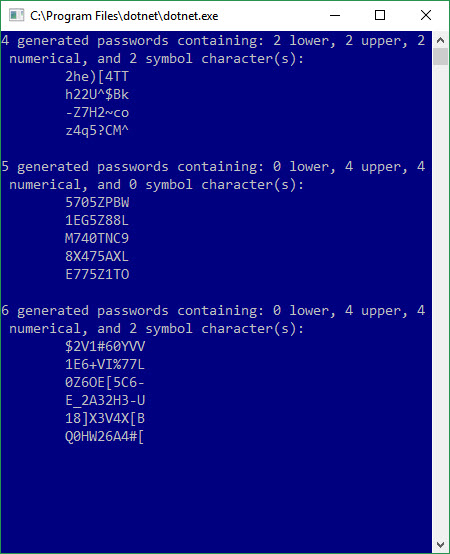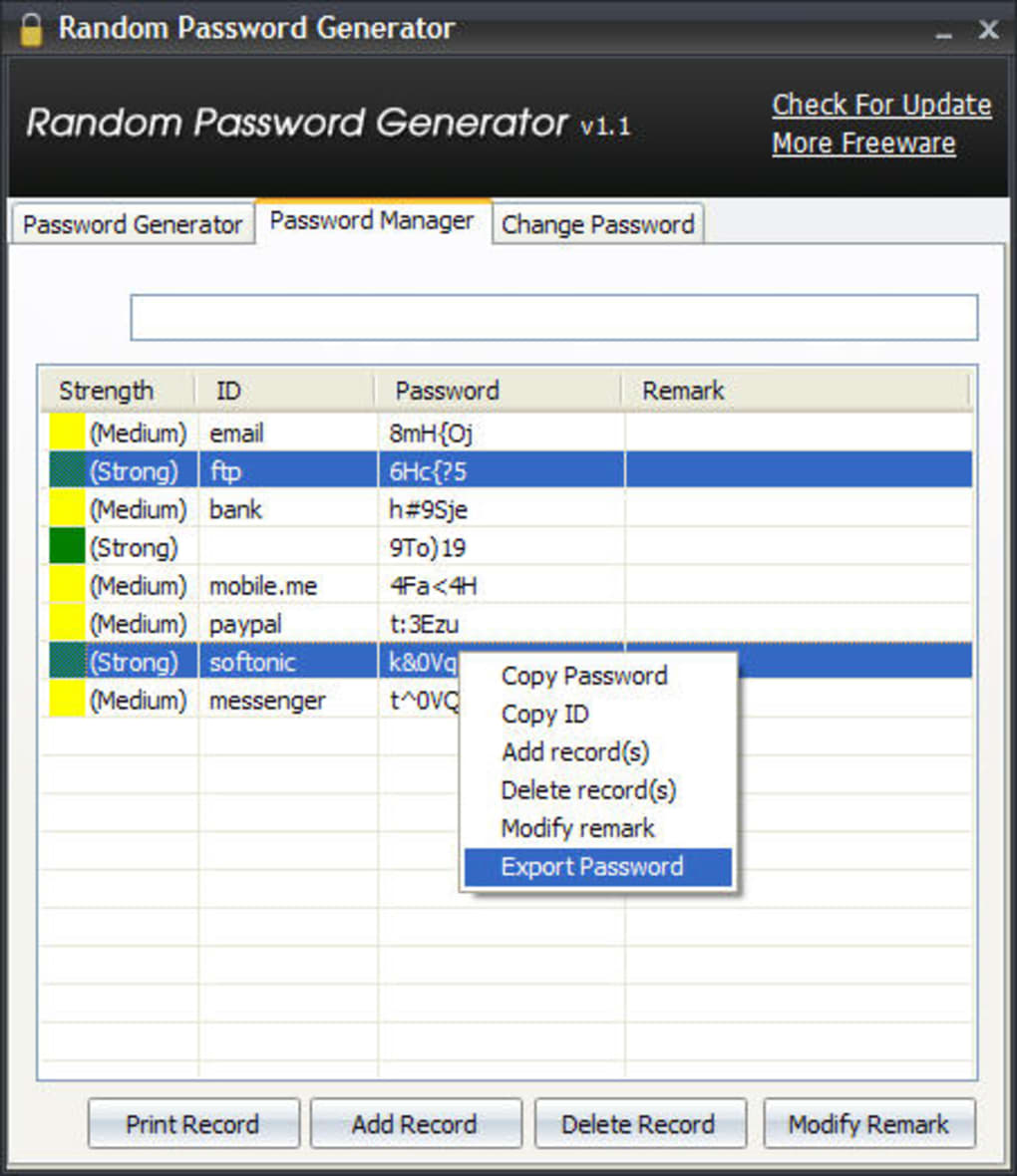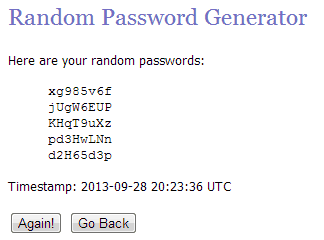

- Random password generator algorithm cracker#
- Random password generator algorithm code#
- Random password generator algorithm crack#
I never use my old MySpace or Yahoo account,” but in the case of the Yahoo data breach, 59% of users also had an account compromised in the Sony breach of 2011, and were using the exact same password for both services 3!

Now you may think to yourself, “I don’t care. In 2012, Yahoo Voice had a data breach of nearly half a million usernames and unencrypted passwords 2.
Random password generator algorithm crack#
It exposed passwords that were weakly hashed and forced lowercase, making them relatively easy to crack 1. So there is no need to explicitly do it yourself: range(random.Sometime in 2008, MySpace had a data breach of nearly 260 million accounts.

The builtin range() function will already start from zero if no other start value is specified.
Random password generator algorithm code#
Instead, simply use the variable _ which conveys to the reader that your only using this loop for code repetition: for _ in range(0, random.randint(100000, 250000)): Inside of your first for-loop, you never use the variable letter. This makes much clearer where attempted_password is used. Instead of making attempted_password global, define it local to the solve_password() function. There is rarely ever a good reason to use them. '0123456789abcdefghijklmnopqrstuvwxyzABCDEFGHIJKLMNOPQRSTUVWXYZ'ĭon't use global variables. Instead of having the list_of_chars variable, make use of the string module which already defines all alphanumeric characters: > import string

Is there any way to make my code more "Pythonic" (like a native Python coder)? and Is there anyway to improve performance, readability, etc. I've seen Python code which is written Java style, but is still easy to read because the author was consistent in their style. However, even if sometimes you choose not to comply with a certain coding standard, make sure you are consistent with your naming conventions. The only thing I'd suggest is to break some of your longer statements up - such as your print statement at the end of your script - onto separate lines, with each separate line being indented.
Random password generator algorithm cracker#
I created a fun password cracker using literal brute force, searching each character to see if it matches an ASCII character 0123456789abcdefghijklmnopqrstuvwxyzABCDEFGHIJKLMNOPQRSTUVWXYZ.


 0 kommentar(er)
0 kommentar(er)
